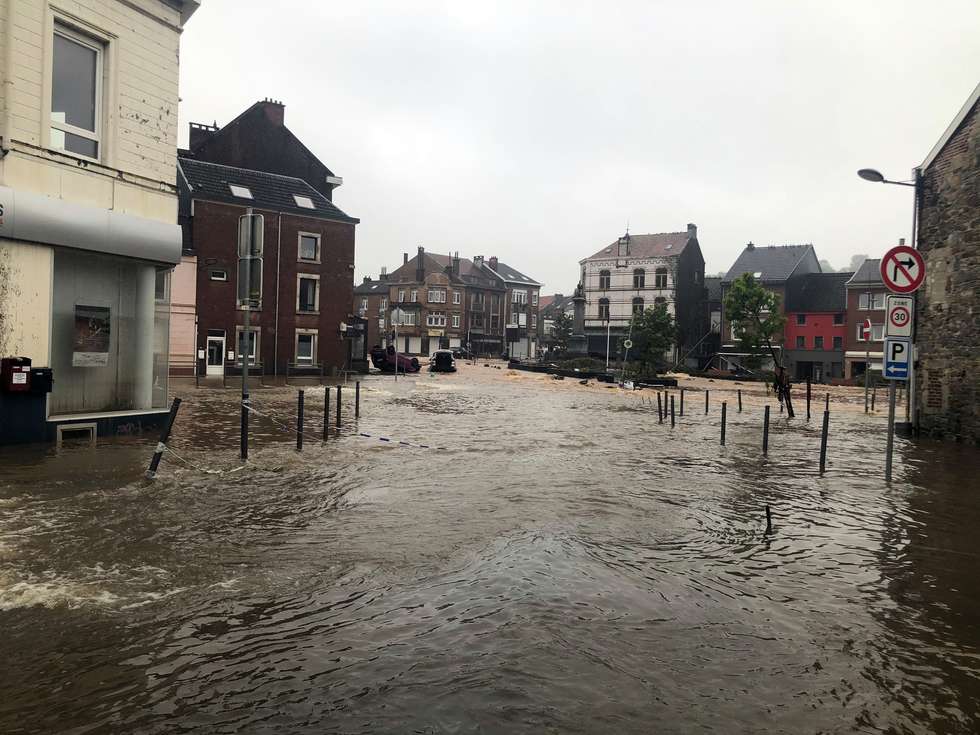Extreme weather events dominate the list of disasters in terms of both the human and economic toll over the past 50 years, according to a comprehensive analysis by the World Meteorological Organization (WMO) published on Friday.
Worldwide, of the top 10 disasters, the hazards that led to the largest human losses during the period have been droughts (650 000 deaths), storms (577 000 deaths), floods (59 000 deaths) and extreme temperature (56 000 deaths), according to WMO’s forthcoming Atlas of Mortality and Economic Losses from Weather, Climate and Water Extremes (1970-2019). The Atlas will be published in September
With regard to economic losses, the top 10 events include storms and floods. Floods and storms inflicted the largest economic losses in the past 50 years in Europe, at a cost of US$ 377.5 billion. The 2002 flood in Germany caused US$ 16.48 billion in losses and was the costliest event in Europe between 1970 and 2019. However, heatwaves had the highest human toll.
The data show that over the 50-year period, weather, climate and water hazards accounted for 50% of all disasters, 45% of all reported deaths and 74% of all reported economic losses at global level.
“The human and economic was highlighted with tragic effect by the torrential rainfall and devastating flooding and loss of life in central Europe and China in the past week," said WMO Secretary-General Petteri Taalas.
“Recent record-breaking heatwaves in North America are clearly linked to global warming,” he added. “But increasingly, heavy rainfall episodes also bear the footprint of climate change. As the atmosphere gets warmer it holds more moisture which means it will rain more during storms, increasing the risk of floods.”
“No country – developed or developing – is immune. Climate change is here and now. It is imperative to invest more in climate change adaptation, and one way of doing this is to strengthen multi-hazard early warning systems."
"Water is the primary vehicle through which we feel the impacts of climate change. To effectively address both water and climate challenges, we must bring climate change and water to the same table – into the same conversation. Tackling them as one.”
Within Europe, the distribution of disasters by related hazard shows that riverine floods (22%), general storms (14%) and general floods (10%) were the most prevalent hazards.

Source: WMO
The German national meteorological service, DWD, said up to two months’ worth of rainfall fell in 2 days (14 and 15 July) on soils that were already near saturation in the most affected regions of Germany, Belgium, Netherlands, and Luxembourg. Switzerland and Austria were also hit by severe flooding.
Despite the recent tragedy, the death toll from extreme weather is generally falling because of improved early warnings and better disaster management, according to WMO. A high death toll from heatwaves in Europe in 2003 and 2010 ushered in new heat-health action plans and early warnings which have been credited with saving many lives in the most recent decade.
However, despite early warning systems that have been put in place, for example by the European Meteorological Infrastructure (EMI) and its network, national authorities in the affected countries appear not to have understood the significance of the warnings and were taken by surprise by last week's floods and torrential rainfall in Germany and other countries, according to media reports.
The Belgian authorities received 25 warnings from the European Flood Awareness System (EFAS) of severe weather on the way, and yet nothing appears to have been done until the last minute, according to an investigation by Het Laatste Nieuws.
Do the early warning systems need to be improved or can extreme weather events caused by climate change not be predicted precisely? WMO did not respond to a request for comment at the time of publication. EMI referred The Brussels Times to the German Weather Service (DWD) which did not respond immediately to a request for comment.
Update: Following the publication of the article, Franz-Josef Molé, Head of the DWD Weather Service’s Forecast and Advisory Centre, told The Brussels Times on Friday that the centre had received information from both EMI and meteorological services in other countries and was aware of what was going on.
“We knew in advance that an extreme weather event would affect a huge area in Germany and neighbouring countries but the information was less precise as regards small rivers and it wasn’t possible to foresee how every small valley in the area would be affected.”
The first hints came during the weekend, more than two days before the flooding. On Monday morning (12 July), DWD issued a kind of prewarning with a hint of torrential rainfall up to 200 l/m², followed in the late afternoon by the acute warning level 3 which already means a dangerous weather event with a potential risk of serious damage. Next day, on Tuesday, DWD raised the warning level to 4, the highest level.
“"It was an extreme and unprecedented weather event far above everything that had hit the region before. Local communities most likely weren't prepared for such an event which was not written in their emergency plans. The plans will now have to be updated. We need to improve the protection of towns in affected areas, improve warnings to people, and improve preparedness at local level further down-stream rivers in advance of floods.”
The Brussels Times

